Beyond
Boundaries
MUSIC AND THE EARLY MODERN IMAGINATION
Massimo Ossi, editor
Beyond
Boundaries
Rethinking Music Circulation in Early Modern England
Edited by
LINDA PHYLLIS AUSTERN, CANDACE BAILEY,
and AMANDA EUBANKS WINKLER

This book is a publication of
Indiana University Press
Office of Scholarly Publishing
Herman B Wells Library 350
1320 East 10th Street
Bloomington, Indiana 47405 USA
iupress.indiana.edu
2017 by Indiana University Press
All rights reserved
No part of this book may be reproduced or utilized in any form or by any means, electronic or mechanical, including photocopying and recording, or by any information storage and retrieval system, without permission in writing from the publisher. The Association of American University Presses Resolution on Permissions constitutes the only exception to this prohibition.
 The paper used in this publication meets the minimum requirements of the American National Standard for Information SciencesPermanence of Paper for Printed Library Materials,
The paper used in this publication meets the minimum requirements of the American National Standard for Information SciencesPermanence of Paper for Printed Library Materials,
ANSI Z39.48-1992.
Manufactured in the United States of America
Cataloging information is available from the Library of Congress.
ISBN 978-0-253-02479-4 (cloth)
ISBN 978-0-253-02482-4 (paperback)
ISBN 978-0-253-02497-8 (ebook)
1 2 3 4 5 22 21 20 19 18 17
We dedicate this book to our contributors.
CONTENTS
/ Linda Phyllis Austern, Candace Bailey, and Amanda Eubanks Winkler
/ Katherine Steele Brokaw
/ Jane Flynn
/ Graham Freeman
/ Christopher R. Wilson
/ John Milsom
/ Katherine R. Larson
/ Sarah F. Williams
/ Candace Bailey
/ Alan Howard
/ Bryan White
/ Rebecca Herissone
/ Amanda Eubanks Winkler
/ Suzanne Aspden
/ Michael Burden
/ Bonny H. Miller
ACKNOWLEDGMENTS
This book would not have been possible without the assistance of many. We would especially like to thank Raina Polivka, sponsoring editor from Indiana University Press, for her encouragement and support from the beginning. We are also indebted to the two anonymous readers who provided such incisive comments. Special thanks go to Northwestern University musicology PhD student and fellow member of the North American British Music Studies Association, Jason Rosenholtz-Witt, for tackling the onerous task of compiling and checking the master bibliography for the volume. We are grateful to our contributing authors for writing such interesting and varied essays for this collection. We also recognize that our work would not be possible without the assistance of the staff working in the institutions cited in the individual essays, and we sincerely appreciate their help in locating and making available resources for this book. Finally, it has been a pleasure to work with one another from early discussions about the circulation of music in early modern England through the final stages of preparing this study. We are most grateful to our families, who, as usual, have put up with us working through nights, weekends, and summer vacations.
NOTE ON TRANSCRIPTION
Quotations from early modern sources retain original spellings, capitalization, and punctuation with these exceptions: the y used as a thorn has been changed to th and the use of i, j, u, and v have been modernized for ease of reading.
ABBREVIATIONS AND LIBRARY SIGLA
ABBREVIATIONS
BDECM | A Biographical Dictionary of English Court Musicians 1485-1714 |
DNB | Dictionary of National Biography |
ECP | Eighteenth-Century Periodicals |
GMO | Grove Music Online |
OED | Oxford English Dictionary Online |
LIBRARY SIGLA
B (Belgium)
D (Germany)
Hs | Staats- und Universittsbibliothek Carl von Ossietzky, Musikabteilung |
GB (Great Britain)
AB | Aberystwyth, National Library of Wales |
Cfm | Cambridge, Fitzwilliam Museum |
Ckc | Cambridge, Kings College, Rowe Music Library |
Cssc | Cambridge, Sydney Sussex College |
Cu | Cambridge University Library |
ERO | Essex Record Office |
Eu | Edinburgh, University Library, Main Library |
Ge | Glasgow, Euing Music Library |
GL | Gloucester, Cathedral Library |
Lbl | London, British Library |
Lcm | London College of Music |
Lg | London, Guildhall Library |
Ob | Oxford, Bodleian Library |
Och | Oxford, Christ Church |
TNA | The National Archives, Kew |
J (Japan)
Tn | Tokyo, Nanki Music Library |
US (United States)
NH | New Haven, Yale University, Music Library |
NYp | New York, New York Public Library for the Performing Arts, Music Division |
Beyond
Boundaries
Introduction: Rethinking Boundaries in Musical Practice and Circulation
Linda Phyllis Austern, Candace Bailey, and Amanda Eubanks Winkler
The fifteen essays in this collection reconsider ways in which musical practice and circulation in early modern England negotiated boundaries, demonstrating how music and musicians fluidly moved between social and professional hierarchies, oral/aural and written traditions, and sacred and secular contexts. From the mid-sixteenth century to the end of the eighteenth century, musical spaces were elided among home, stage, court, church, and street, and musical collaborations triumphed over national, vocational, and confessional differences. Gender norms were relaxed and reconfigured, and labor and leisure overlapped for the performance and consumption of music. Through patterns of circulation and use, the public became private, the private public, and the musical dicta of etiquette and pedagogical manuals were suspended.
This book began as a series of conversations among several contributors. It became increasingly evident that many of the categories applied to seventeenth-century English music making are anachronistic. Most immediately questionable, we found, were hard divisions between the public and the private and amateur and professional musicianship. Actual patterns of practice, especially as evident in manuscripts and eyewitness accounts, were far more nuanced than theoretical bifurcation allows. As our discussions expanded into the sixteenth and eighteenth centuries, we realized that other widely accepted oppositions such as female and male, Catholic and Protestant, oral and written, high art and popular, and creator and consumer were more set in modern scholarship than in historical practice. Even the clean division of institutional music making into court, church, theater, and chamber so beloved by introductory textbooks became murky as we considered the contents of manuscripts, title pages and dedications of print collections, mass-market circulars such as broadsides and magazines, and performance practices for anything classified as dramatic or theatrical. The picture was further complicated by subtle and changing notions of
Next page


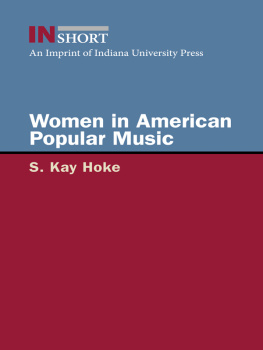

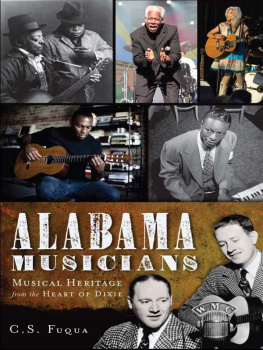
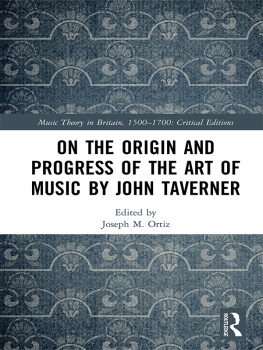
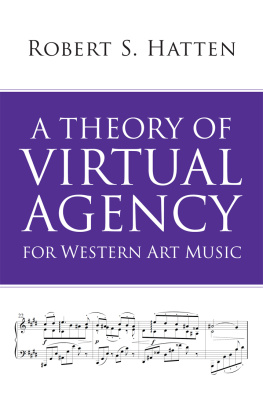
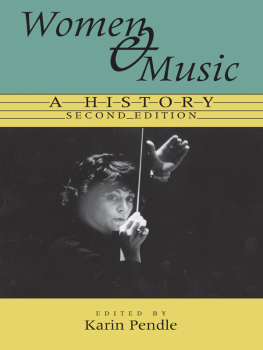
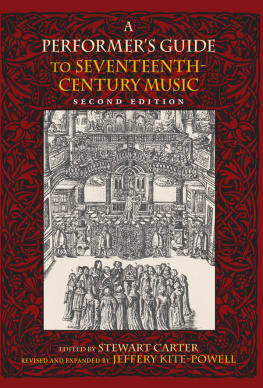

 The paper used in this publication meets the minimum requirements of the American National Standard for Information SciencesPermanence of Paper for Printed Library Materials,
The paper used in this publication meets the minimum requirements of the American National Standard for Information SciencesPermanence of Paper for Printed Library Materials,